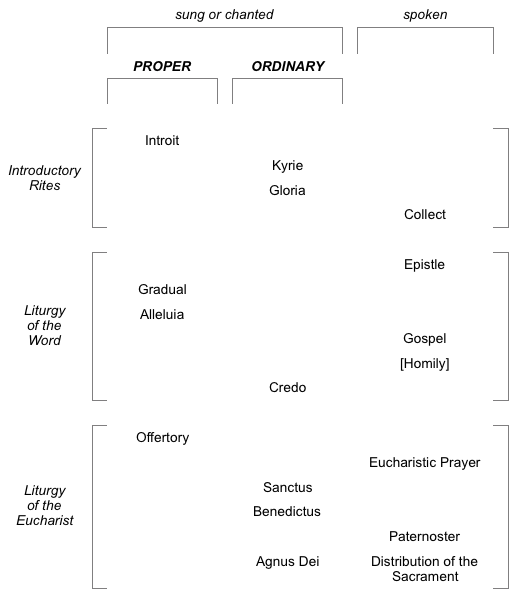Programme Notes - Viennese Masses December 2012
The classical style is always at its most problematic in religious music.
So says musicologist and classical expert Charles Rosen in his book The Classical Style.
In order to understand this statement, at least as far as the subgenre which is the Viennese mass is concerned, we need some context. We need to identify the main features of the musical language of the classical period. We also need to comprehend the basic history and structure of the mass itself as a liturgical rite, and, finally, we need some conceptual understanding of the cultural, political and social conditions which prevailed in Vienna in the latter part of the eighteenth century.
The Mass
The constituent elements of the sung Mass as a religious rite are made up of two simple parts: the Ordinary, sections in which the words are common throughout the year; and the Proper, sections in which the words change according to the season of the Christian year. It is the Ordinary with which we are concerned here, the words and structure of which evolved throughout the course of the fourth to eleventh centuries. The musical history of the Ordinary began simultaneously in the form of ancient tropes, or melismatic plainsong interpolations.
The Mass, or the musical setting of the six movements of the Ordinary ritual of the Eucharist (Kyrie, Gloria, Credo, Sanctus, Benedictus and Agnus Dei), was of outstanding importance in the development of both monophonic and polyphonic styles from the middle ages until the late sixteenth century. By the fifteenth century the polyphonic mass had become a musical genre in its own right, and one of the seminal forms of European art music. After the sixteenth century the polyphonic mass became less important, as other genres grew, and the focus for the provision of music gradually began to swing away from the church. However, significant settings of the mass in later idioms exist from almost every major composer from Bach to Stravinsky.
The structure of the mass, or Eucharistic service, evolved to be as follows, with the six movements of the Ordinary being intrinsic to the structure of the service.
